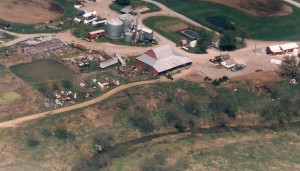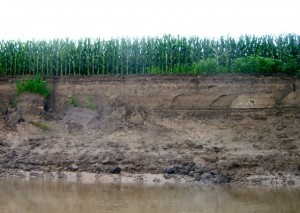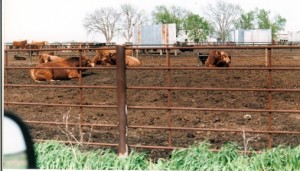|
Johnson County is an important agricultural producer with almost 45,000 acres of soybeans, corn, wheat and sorghum and almost 24,000 acres of hayland. In addition to crops, there are also enough cows in the area to populate a small city. Fertilizers and chemicals used in agriculture and management of animal waste and other by-products all substantially impact the Kansas River.
There are a number of programs that help farmers by providing guidance – and in some cases cost share options – on projects that help reduce pollution in stormwater runoff. These include:
Best Management Practices for Agricultural ProducersBest Management Practices are also good business practice. Practices that reduce runoff can also increase profitability by decreasing erosion and costs by reducing the need for fertilizer and chemical application, improving soil and water, and improving livestock productivity. Consider the following BMPs for your farm. The River Friendly Farms Environmental Assessment at The Kansas Rural Center can provide help.
Plan and Implement Extended Legume-Based Crop Rotations A study conducted in the Lower Kansas River watershed by K-State researchers has found that reducing tillage was similar in production costs per acre but substantially decreased soil erosion, nitrogen and phosphorous loss.
Use Cover Crops According to the Kansas Wheat Association high residue cropping systems and conversion to no-till or minimum till with a planned crop rotation can reduce the need for fertilizer, improve soil moisture, and reduce erosion from wind and rain. Buffer strips, Riparian Filter Strips, and Field Grass Filter Strips: The NRCS considers buffers a win-win-win strategy because they are economically viable when developed with federal and state incentives; help farmers to meet federal, state, and county regulations; improve habitat for wildlife and game species; and reduce flooding. All that while reducing sediment, nutrients, pathogens and ag chemicals entering streams. You can get assistance with economic incentives and project planning from your local NRCS office. These programs include:
Streambank erosion is a major concern in Kansas because it is a leading cause of reservoir sedimentation. Buffer strips can significantly reduce erosion.
Use livestock management systems that reduce confinement feeding and potential pollution including:
|
Agricultural Producer Information and Resources
March 20, 2013 by /




